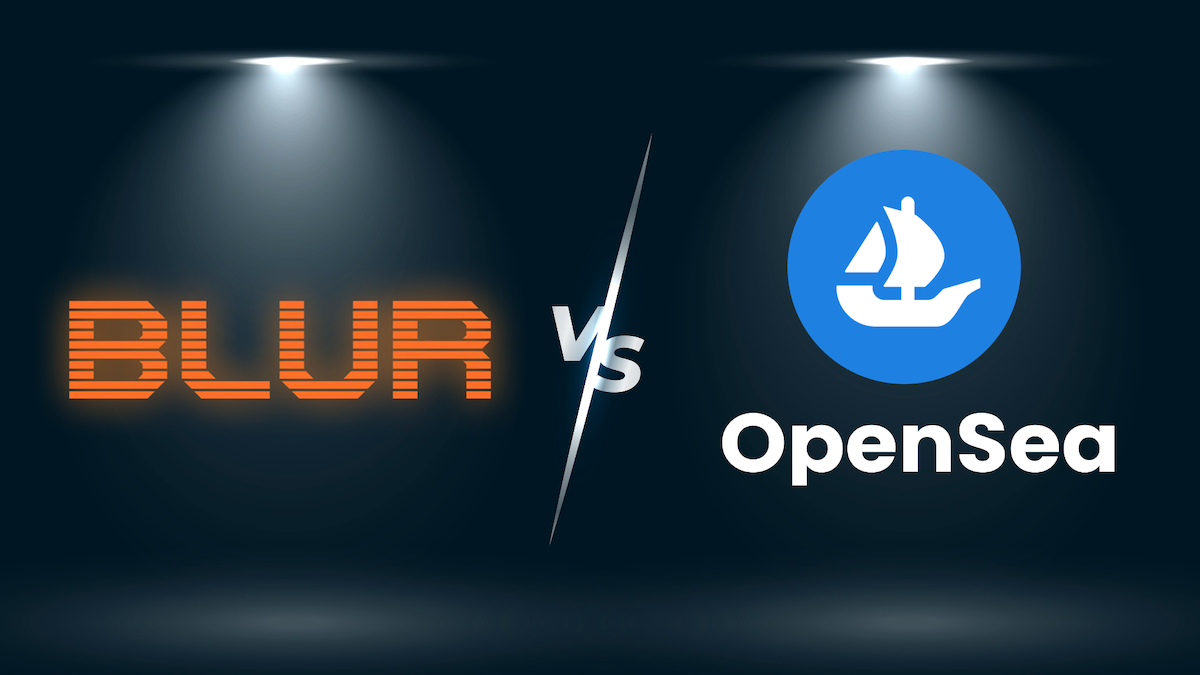The Battle for NFT Marketplace Supremacy: A Comparison of Opensea and BLUR

NFTs have been the talk of the town in the world of cryptocurrencies for the past couple of years.
They have become a hot topic among artists, collectors, and investors alike, with the market showing no signs of slowing down.
The introduction of new NFT marketplaces such as BLUR has given traditional marketplaces like Opensea a run for their money, resulting in a fierce battle for supremacy.
In this article, we will compare Opensea and BLUR and evaluate which marketplace has the edge over the other.
Market Share
According to Delphi Digital, BLUR has achieved a 53% market share within a few months of launch, surpassing Opensea.
This market share is impressive, considering that BLUR is a relatively new player in the NFT marketplace space.
Opensea, on the other hand, has been in the game for much longer and has a solid reputation, but it has failed to keep up with BLUR’s rapid growth.
However, Opensea still retains many of its traders, even when fewer traders on BLUR are making larger trades.
Platform Features
Opensea has been the go-to NFT marketplace for a long time, and for good reason. It is a well-established platform with a user-friendly interface and a massive collection of NFTs.
However, BLUR has been able to differentiate itself by offering zero marketplace fees and an option to skip or reduce royalty payments, making it a more attractive option for creators and collectors alike.
BLUR also offers faster NFT sweep/swipes out there, making it a more efficient marketplace.
However, Opensea falls short in having “sniping” NFT tools, a feature that BLUR offers.
BLUR’s Airdrop
One of the key reasons for BLUR’s success is the massive $BLUR airdrop. This airdrop was the biggest reason for the surge in market dominance, despite the low fees and fancy tools.
However, BLUR’s response to cutting off all ties with Opensea by recommending users block Opensea from accessing their wallets and enforcing the royalty fee requested by any NFT project creator so long as that creator blocks the trading of their collections on OpenSea, was met with some controversy.
Opensea’s Answer
Opensea has responded to the threat posed by BLUR by making significant changes to its platform, including reducing fees to 0% from the previous 2.5%.
This move has resulted in increased volume, with the highest recorded since 14 June 2022.
However, BLUR still dominates the larger volume, executing many high-value trades with an average NFT sale price of $1,365 compared to Opensea’s $351.
While Opensea’s move has made it more competitive, it has resulted in a negative impact on NFT creators in the long run, with the 0% fees becoming a norm.
Conclusion
In conclusion, the battle for NFT marketplace supremacy between Opensea and BLUR is fascinating.
While Opensea still retains many of its traders and has a solid reputation, BLUR has made significant strides in its short time in the market, offering a more attractive option for creators and collectors alike.
With BLUR’s airdrop, zero marketplace fees, and faster transaction times, it is no surprise that it has been able to gain a significant market share.
However, Opensea has responded well to the challenge and remains a strong contender in the market.
It remains to be seen who will come out on top, but one thing is certain: the battle for NFT marketplace supremacy is far from over.




Reviews